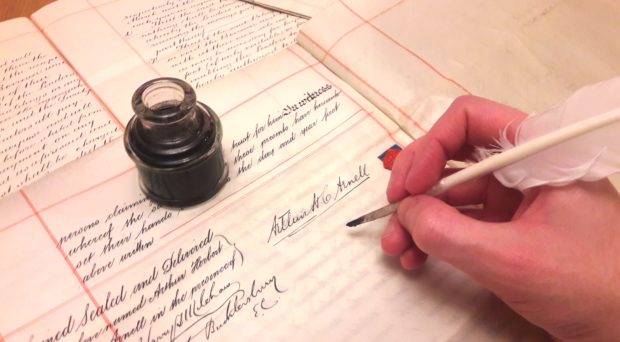
Historic legal documents are one of the most abundant resources in British archives, but also one of the most neglected. Despite the millions that survive, we know remarkably little about their production.
Uncertainty even remains over the animal species used, with deeds frequently cataloged as ‘vellum’ (etymologically meaning calfskin), ‘parchment’ (typically reserved for sheep or goatskin), or even more generally as ‘animal membrane’.
确定所使用的物种可能具有挑战性。以前已经根据对其大小,厚度,颜色和卵泡图案的主观解释进行了识别,这通常会导致misidentification。
In contrast, peptide mass fingerprinting can now offer absolute determination of species, and is revolutionizing thestudy of old manuscripts。
We used this method to analyse 645 documents dated from CE 1499 to 1969, and identified 96.4% as sheep.
The preferential use of sheepskin may lie in efforts to deter fraudulent changes to legal agreements after they had been signed due to the visibility of text erasure afforded by its unique structure.
Why sheepskin?
Parchment is made from the dermis, a layer of the skin divided into the upperpapillary dermis和lowerreticular dermis。由于结构的突然变化和它们之间形成的大量脂肪,它们的绵羊皮的连接较弱。
During parchment production the skin is submerged in an alkaline solution which draws out this fat, leaving voids between the two layers.
Consequently, if the surface is scraped in an effort to remove text, there is a risk that they detach (known as ‘delamination’) leaving a large blemish on the surface.
皮肤脂肪占绵羊皮干重的30-50%,而牛的牛皮脂肪占羊皮的2-3%,而山羊皮的羊皮则占3-3%,导致分层的风险更高。

The visibility of textual manipulation offered by sheepskin parchment was noted in the 12th centuryDialogus de Scaccario—attributed to the Lord Treasurer Richard FitzNeal—that “they do not easily yield to erasure without the blemish being apparent”.
Later in the 17th century,爱德华·可口可乐爵士角色被首席Justice of the King’s bench—again noted the necessity of writing deeds on durable material such as parchment “for the writing on these is least liable to alterations or corruption”.
虽然文本擦除的可见性倾向于使用羊皮羊皮纸,但这种传统的延续直到19世纪后期可能受到其更大的可用性和较低成本的影响。
Sheep of any age can be used for parchment, but only those from calves younger than around 6 weeks old can be used for vellum due to the increasing thickness of their skin, with the result that only a few hundred thousand were likely available annually.
In contrast, the UK was home to more sheep than humans until the Victorian era.
The limited supply of calfskin meant that vellum was more than double the price of sheepskin parchment, and was often reserved for special documents such as record copies ofActs of Parliament。
在纸上使用羊皮纸,可能是由于人们认为它也将更耐用,这与书面协议的预期耐用性相匹配。
Consequently, for common legal documents, sheepskin parchment presented the ideal inexpensive, durable and tamper-proof material.
注释